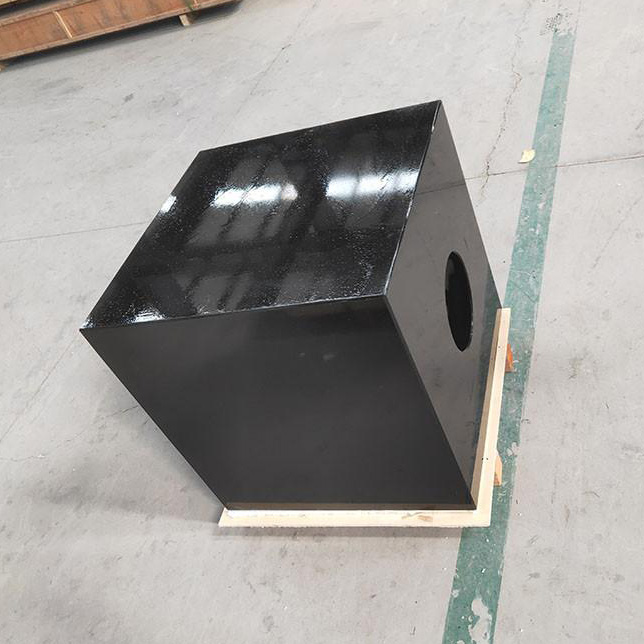Performance of granite square box:
The organization structure of the granite square box is dense, the surface is smooth and wear-resistant, and the roughness value is small. It is a precision benchmark measurement tool made of natural stone materials. After strict physical testing and selection of granite materials, the crystal is fine and the texture is hard. It is an ideal benchmark for the inspection of instruments, precision tools, and mechanical parts. It has the advantages of high precision, non rusting, acid and alkali resistance, non magnetization, unchanged shape, good wear resistance, and can maintain stability under heavy loads and general temperatures. The granite square box is superior to precision measurement reference parts made of high-quality cast iron and steel, and can achieve high and stable accuracy. Even if it is hit by heavy objects during use, at most a few stones can be dropped. The granite material, which has undergone strict physical testing and selection, is finely crystallized and has a hard texture. Due to the use of non-metallic granite materials, various granite measuring tools have no magnetic reactions or plastic deformation. Its high hardness results in good accuracy retention. Even if it is hit by heavy objects during use, at most a few pieces of debris will fall off.
Purpose of marble square box:
The main mineral components of marble square boxes are abscission stone, plagioclase, small amounts of olivine, biotite, and trace amounts of magnetite. The texture is hard, with a Damo hardness of 6-7 levels. It is wear-resistant, acid and alkali resistant, corrosion-resistant, and will not rust. It is mainly used for high-precision measurement of inspection instruments, precision tools, mechanical parts, and other equipment.
To ensure that the joints of the marble measuring tool are neat after the board is laid, the national standard specifies the allowable deviation of the marble board size and grid size, the allowable limit tolerance of flatness, and the allowable limit tolerance of angle. Marble can be divided into two types: regular board (square or rectangular board) and irregular board (other shaped board).














